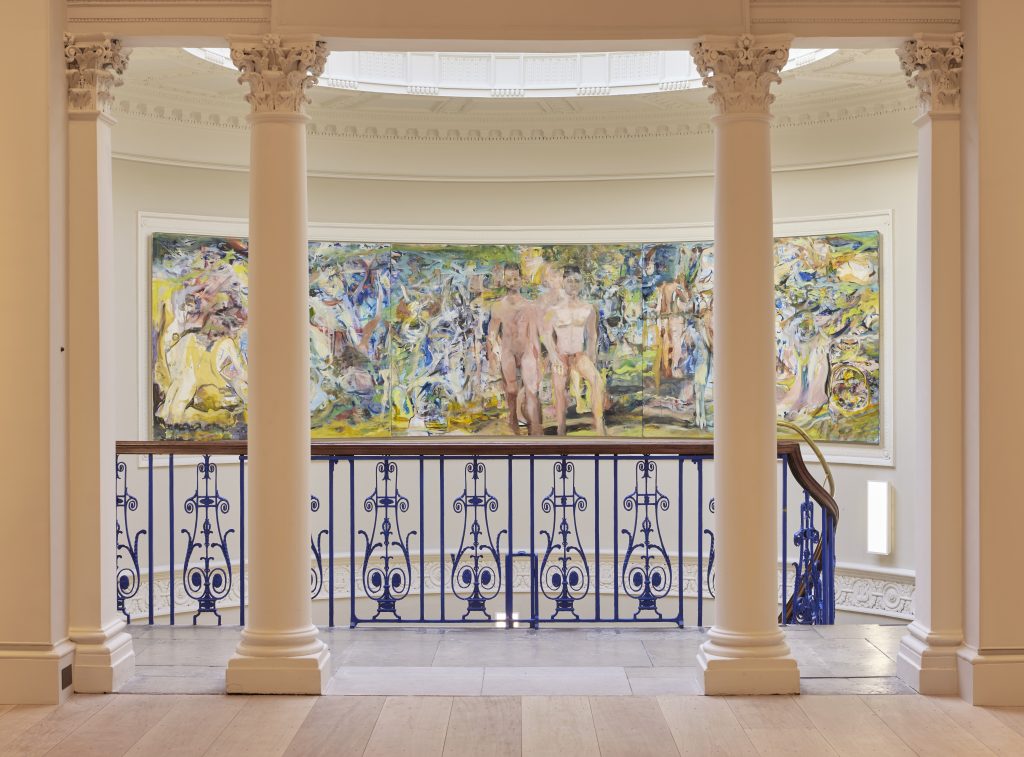
When I used to travel to London regularly, the Courtauld Gallery was one of my favourite places to visit. Last weekend I went back, for the first time since its extraordinarily expensive (£57m) makeover, which closed it for three years. The building now looks elegant enough and there are many practical improvements. But I can’t help thinking that the collection isn’t quite what it was. There seem fewer post-medieval works on display than there used to be: the twentieth century comes to an abrupt end with the post-impressionists. And the basement is given over to a bloated commercial space, with plenty of high-end tat but very few books on offer.
Still, the core of the collection is still there, and given generous space. We were too early in London to see the Tate’s big new Cézanne show, so it was good to stand in front of his Courtauld paintings – every one of them outstanding. And to stare hard at my favourite work in the Gallery, Édouard Manet’s A bar at the Folies-Bergères.

What I particularly like about that painting, apart from its size and the richness of its paint and detail, is that it holds so many mysteries. Most of them are unsolvable. Why, in a ‘realist’ painting, does Manet ignore the rules of physics in his treatment of the mirror? Why do we see only the lower part of the trapeze artist, and in miniature? Why is there a small glass of flowers on the counter (is it relevant that all Manet’s final paintings were of flowers in glasses)? Why does the barmaid look at us so directly and so dreamily? What is the man in the top hat up to?
If we accept the mirror distortion, the man is clearly standing exactly where we’re standing, right in front of the woman, with only the counter between them. Is he ordering a drink, or is he bending towards her to make a different proposition, as many have suggested (the Folies-Bergères was a well-known location for picking up women). Whatever the explanation, the man’s presence complicates, and maybe even corrupts, what would, in his absence, be a straightforward and glorious assertion of the woman’s figure. Without him, she would dominate this large and well-populated painting in a way unusual in late nineteenth century art. With him, her dominance becomes qualified. Somehow, she loses her self-absorption, and a part of her self-sufficiency.

On the same wall nearby hangs a much smaller, unfinished work by Manet that raises the same unsettling question. Its title is Au bal (At the ball). It was painted in around 1877, five years before A bar at the Folies-Bergères. Manet left it unfinished, and it was sold with other works in his studio when he died. The woman is Marguerite de Conflans, who sat for Manet more than once. She stands, her white dress cut to reveal her shoulders, and tosses back her head with its short-cut hair. This too looks like a definite statement by a confident woman. But then we realise that there’s another figure in the painting. The woman is casting her glance on a man standing to her left. He’s too vaguely outlined for us to know what his relationship might be to the woman: we glimpse his short moustache and beard, but not much more. Again, the woman’s figure, bold and clear, is in some way compromised once we realise that her attention has been caught by the shadowy man behind her. Is it possible that Manet found some difficulty in knowing how to resolve this tension without further reducing the woman’s undeniable stature and dignity?

There’s another striking woman on show in the Courtauld at the moment: a large picture, labelled Untitled, 1990 (Standing Woman), on loan from Wolverhampton Art Gallery, one of the Courtauld’s partner institutions. It’s drawn in pastel on paper. The artist is Claudette Johnson, a founder of the BLK Art Group. She’s known for her bold and highly accomplished portraits of black women, and this is a fine example. Here there’s no man or any second figure to complicate the picture. This naked woman fills the picture field (and more), and stares directly at us. Her look is proud, assertive and self-assured. She has no use for others and their attentions, or intentions. Johnson has given an emphatic response to Manet’s questions, by banishing the men and allowing her woman simply to be herself.

Leave a Reply